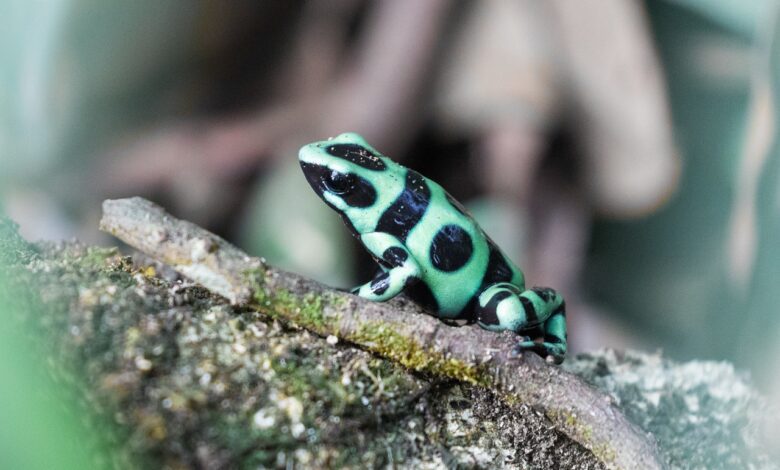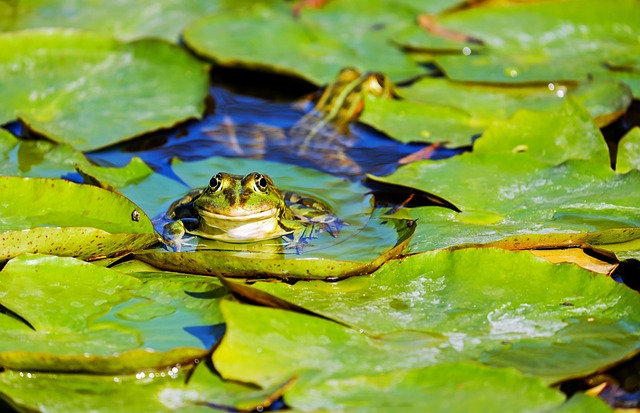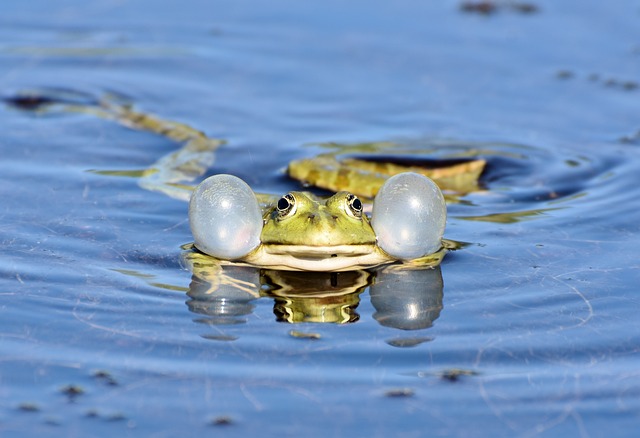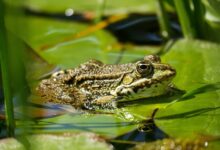Frogs: 5 Interesting Facts

Frogs are fascinating amphibians that have captured the imagination of people across the globe. With their unique life cycle and diverse adaptations, they play a crucial role in various ecosystems.
Table of Contents
Scientific Name
The scientific name for frogs is Anura. This means “without tail” in Greek, referring to the fact that frogs do not have tails as adults.
Scientific Classification
Frogs are amphibians classified under the order Anura. They belong to the family Ranidae, which includes true frogs, and there are over 6,000 known species of frogs worldwide. These amphibians have evolved and adapted to live both in aquatic and terrestrial environments.
Types of Frogs
There are many different types of frogs, each with its own unique appearance and behavior. Some of the most common types include:
- Tree frogs: Typically small and slender, with sticky pads on their toes that allow them to climb trees.
- Pond frogs: Typically larger than tree frogs, and they live in or near water.
- Poison dart frogs: Brightly colored frogs that are poisonous to predators.
- Glass frogs: Transparent frogs that allow you to see their internal organs.
Evolution
The evolutionary history of frogs can be traced back over 200 million years. These remarkable creatures have survived numerous changes in the Earth’s climate and landscape. Their unique life cycle, starting as tadpoles in water and metamorphosing into terrestrial adults, is a testament to their successful adaptation and survival strategies.
Behavior and Communication
Frogs exhibit a range of behaviors, from their distinct mating calls to various courtship rituals. The croaking of male frogs is a familiar sound during the breeding season, serving to attract females and establish territory. Each species has its own distinctive call, ensuring that potential mates can identify one another in the chorus of amphibian voices.
Habitat and Adaptations
They are highly adaptable creatures, inhabiting diverse environments around the world. They can be found in tropical rainforests, arid deserts, and even polar regions. Their semi-permeable skin allows them to absorb water, making them sensitive to environmental changes and pollutants. Some species have evolved unique adaptations, such as the ability to change color to blend in with their surroundings for protection from predators.
Diet and Nutrition
As carnivorous animals, they primarily feed on insects and other small invertebrates. They have specialized tongues that shoot out to catch prey with impressive speed and accuracy. Some larger species, like the Pacman frog, can even consume small vertebrates, including other frogs.
Predators and Threats
Frogs face threats from various predators, depending on their habitat. Snakes, birds, fish, and mammals are among the most common predators of frogs. Unfortunately, human activities, such as habitat destruction, pollution, and the introduction of non-native species, have significantly contributed to the decline of frog populations worldwide.
Reproduction and Life Cycle
The reproduction of frogs involves a complex process. Females lay eggs in water, which hatch into tadpoles. These tadpoles undergo metamorphosis over several weeks or months, transforming into fully formed froglets. The life cycle of frogs is critical to the health of ecosystems, as they serve as both predator and prey, helping to maintain balance within their environments.
Population and Conservation
Frogs play a vital role in the food web, acting as both consumers and indicators of environmental health. Unfortunately, many frog species are threatened or endangered due to habitat loss, pollution, climate change, and the spread of diseases like chytridiomycosis. Conservation efforts are crucial to protecting these amphibious wonders and preserving their habitats for future generations.
FAQs
Q: Can all frogs jump?
A: While most frog species are excellent jumpers, not all frogs possess this ability. Some are more adapted to walking or climbing due to their habitat preferences.
Q: Are all frogs poisonous?
A: No, not all frogs are poisonous. However, some species have toxic skin secretions as a defense mechanism against predators.
Q: Can frogs survive in both freshwater and saltwater habitats?
A: Most frog species are freshwater creatures and cannot survive in saltwater environments. However, some species, like the green tree frog, can tolerate brackish water.
Q: Do frogs hibernate during the winter?
A: Some frog species hibernate during cold winter months, seeking shelter in mud or under leaves to survive the freezing temperatures.
Q: How long do frogs typically live?
A: The lifespan of frogs varies among species. Smaller species may live for a few years, while larger ones can survive for a decade or more in the wild.
Conclusion
Frogs are remarkable creatures, showcasing a wide array of adaptations and behaviors that have enabled them to thrive in diverse habitats. Their crucial role in ecosystems and captivating life cycle makes them a subject of both scientific interest and human fascination. Protecting these amphibians and their habitats is vital to maintaining the delicate balance of nature and ensuring the continuity of these extraordinary amphibious wonders.






